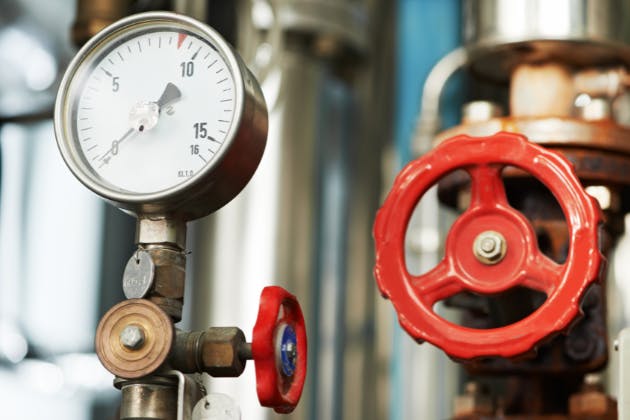If you've noticed your boiler pressure dropping below 1 bar, you're not alone. Pressure loss is one of the most common boiler issues homeowners across Epping, Sawbridge, Bishops Stortford and Harlow face. Let's explore why this happens and what you can do about it.
Why is my boiler losing pressure?
When your boiler is running properly, it should maintain a pressure of 1 to 2 bar. This pressure is essential for circulating hot water through your heating system. When the pressure goes too low, your boiler might stop working properly or shut down entirely.
Common Causes of Low Boiler Pressure
Leaks in the Boiler or System
Leaks are a primary culprit for pressure loss. These can occur in the boiler itself, pipes, or radiators. Signs of leaks include water stains on walls or ceilings, discoloured paint, or audible dripping sounds. Even small, hidden leaks can gradually depressurise your system over time.
Faulty Pressure Relief Valve
The pressure relief valve is a safety mechanism designed to release excess pressure. If this valve malfunctions, it may release water unnecessarily, leading to pressure drops. Inspect the area around the valve for signs of leakage or dampness.
Damaged Expansion Vessel
A compromised expansion vessel can't effectively manage pressure fluctuations. Symptoms of a damaged vessel include frequent pressure drops, strange noises from the boiler, or inconsistent heating performance. Over time, the rubber diaphragm inside the vessel can deteriorate, impacting its functionality.
Recently Bled Radiators
Bleeding radiators remove trapped air, which can improve heating efficiency. However, this process also releases some water, potentially causing a pressure drop. It's crucial to check and adjust your boiler pressure after bleeding radiators.
Broken Boiler Parts
Internal components of your boiler can wear out or malfunction over time. Issues with pumps, valves, or heat exchangers can lead to pressure inconsistencies. These problems often require professional diagnosis and repair.
High-Pressure Issues
Setting the pressure too high can lead to subsequent drops. When the system cools, the pressure relief valve may activate to reduce excessive pressure, resulting in a lower reading when you next check.
How to Repressurise Your Boiler
If you've identified low pressure, follow these steps to repressurise your system:
- Switch off your boiler and allow it to cool completely.
- Locate the filling loop, usually a flexible hose connecting the mains water supply to the boiler.
- Ensure both ends of the filling loop are securely attached.
- Slowly open both valves on the filling loop to allow water into the system.
- Watch the pressure gauge carefully. Close the valves when the needle reaches 1.5 bar.
- Once the valves are closed, switch your boiler back on and reset any error codes.
It's important to note that while repressurising is often a straightforward process, recurring pressure issues may indicate underlying problems requiring professional attention. Regular maintenance by a Gas Safe-registered engineer can help prevent and identify potential issues before they escalate.
To speak to a professional heating engineer in Epping, Sawbridge, Bishops Stortford and Harlow, get in touch with us by calling us on 07738362970.

